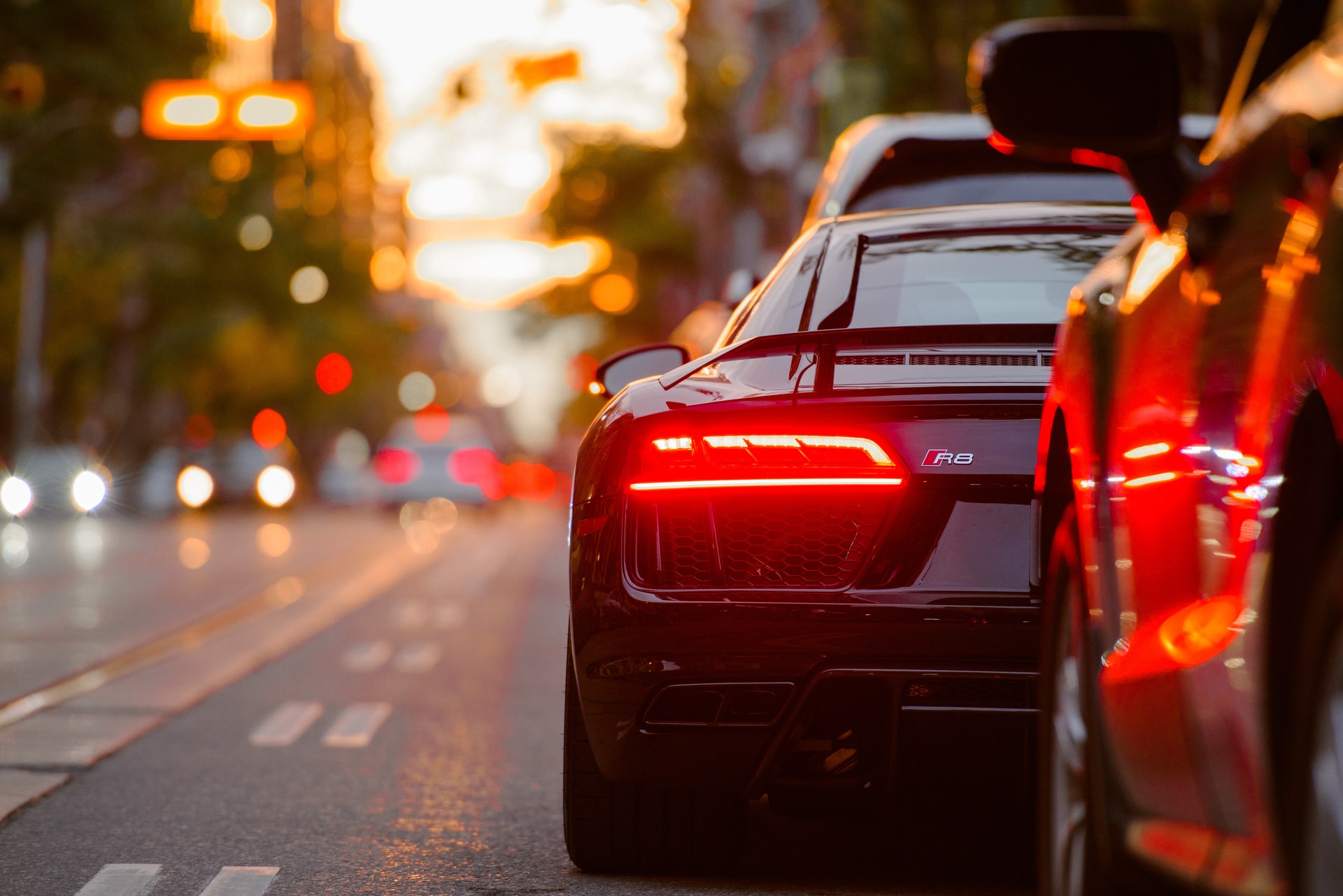From capturing the sleek lines of a classic sports car to immortalizing the adrenaline rush of a high-speed race, automotive photography is a captivating art form that brings vehicles to life. It goes beyond simply snapping pictures of cars, as skilled photographers use their lenses to convey the spirit and energy of these four-wheeled wonders.
With a blend of technical expertise and artistic vision, automotive photography has evolved into a sought-after genre. Originating in the early 20th century, this style of photography has since grown in popularity due to advancements in technology and the increasing fascination with automobiles.
Today, automotive photographers not only showcase the beauty and power of vehicles, but they also play a crucial role in creating captivating marketing materials for the automotive industry. Whether it’s capturing a car in motion or highlighting its intricate details, these visual storytellers have the ability to evoke emotion and inspire a love for all things automotive.
Discover the fascinating world of automotive photography, a unique genre that combines the art of photography with the love of automobiles. With its focus on capturing the beauty and excitement of cars, automotive photography allows enthusiasts to showcase their creativity and passion. From stunning close-ups of sleek car exteriors to dynamic action shots on the race track, this form of photography offers endless opportunities for creativity and expression. Explore the techniques, equipment, and editing methods used by automotive photographers to create striking images that truly capture the essence of these amazing machines.

Table of Contents
ToggleUnderstanding Automotive Photography: Capturing the Essence of Cars
The Art form of Automotive Photography
Automotive photography is the art of capturing the beauty, power, and essence of cars through images. It goes beyond simply taking pictures of vehicles; it aims to tell a story, evoke emotion, and showcase the unique characteristics of each automobile.
Automotive photographers are skilled professionals who have a deep passion for both photography and cars, blending their technical expertise with their love for automobiles to create stunning visual works of art.
In this era of social media and digital platforms, automotive photography has gained widespread popularity. Whether it’s on Instagram, car manufacturer websites, or magazines, captivating images of cars are in high demand and have the power to influence automotive enthusiasts, collectors, and potential buyers.
Understanding the nuances of automotive photography can help both consumers and professionals appreciate and create breathtaking visuals that truly capture the essence of cars.
To excel in automotive photography, photographers must have a keen eye for composition, lighting, and detail. They need to understand the unique angles, lines, and reflections that make automobiles visually appealing. This expertise allows them to create images that not only look aesthetically pleasing but also convey the power, speed, and personality of the vehicles they photograph.
Capturing the Beauty of Classic Cars
Classic cars hold a special place in the hearts of many automotive enthusiasts. Their timeless beauty, historical significance, and iconic designs make them highly sought after subjects in automotive photography. Photographing classic cars requires a different approach than shooting modern vehicles, as these vintage gems often possess a unique charm and character that must be translated into the final image.
When capturing classic cars, photographers focus on highlighting the intricate details and craftsmanship that went into the creation of these magnificent machines. From capturing the fine lines of the bodywork to emphasizing the elegance of the interiors, every element plays a crucial role in presenting the car in its best light.
Lighting plays a vital role in bringing out the beauty of classic cars, with golden-hour sunlight often being the preferred choice for creating a warm and inviting atmosphere.
Additionally, location selection plays a key role in capturing the spirit of a classic car. The backdrop should complement the car’s era and style, whether it’s an urban setting that contrasts with the vintage vehicle or a scenic countryside that evokes a sense of nostalgia.
By paying attention to these details, automotive photographers can create images that transport viewers back in time and make them feel the allure of classic cars.
The Challenges of Action Shots and Motorsports Photography
Action shots and motorsports photography take automotive photography to a whole new level. In these fast-paced scenarios, photographers must not only capture the beauty of the cars but also freeze the motion and convey a sense of speed and excitement.
To achieve this, they employ various techniques and equipment, such as panning, fast shutter speeds, and telephoto lenses, to create dynamic and visually striking images.
One of the key challenges in action shots and motorsports photography is capturing the right moment. From the roaring engines to the splashing of water or flying dirt, there are numerous elements that add drama and intensity to the images. Photographers must anticipate the action, pre-focus their cameras, and have precise timing to capture these thrilling moments.
Lighting is another crucial factor in motorsports photography. Whether it’s shooting under the bright sun or at night races, photographers must adapt to different lighting conditions for optimal results.
They often use high-speed sync flash or fast lenses to ensure sharp and well-lit images, even in challenging environments. Additionally, post-processing plays a significant role in motorsports photography, as it allows photographers to enhance the colors, contrast, and overall impact of the images.
The Rise of Automotive Photography in Advertising and Marketing
Automotive photography has become an indispensable tool in the advertising and marketing industry. Car manufacturers, dealerships, and aftermarket companies rely on captivating images to showcase their products and connect with consumers.
From glossy magazine ads to eye-catching billboards and online campaigns, automotive photography is at the forefront of creating a desire for cars in the minds of potential buyers.
In advertising and marketing, automotive photographers work hand in hand with creative agencies and art directors to bring the brand’s vision to life. They collaborate on every aspect of the shoot, from setting the mood and concept to selecting the perfect location and models.
The goal is to create images that evoke an emotional response, whether it’s the thrill of driving a sports car or the sense of luxury and refinement associated with a high-end vehicle.
Moreover, automotive photographers often use post-processing techniques, such as color grading and compositing, to enhance and refine the final images. These techniques help create a cohesive visual identity for the brand and ensure that the photographs align with the company’s overall marketing strategy.
In the competitive world of automobile advertising, stunning automotive photography can make all the difference in capturing the attention and imagination of potential buyers.
Exploring the Technical Aspects of Automotive Photography
While the artistic and creative aspects of automotive photography are vital, understanding the technical side is equally important. Automotive photographers need to have a solid foundation in photography techniques and equipment, as well as a mastery of post-processing software for optimal results.
When it comes to gear, photographers often rely on DSLR or mirrorless cameras with high-resolution sensors and a variety of lenses. Wide-angle lenses are commonly used for capturing the overall beauty of the car and its surroundings, while macro lenses allow for intricate close-ups of details. Tripods, external flashes, and remote triggers are also essential tools in an automotive photographer’s kit.
Post-processing plays a significant role in automotive photography, allowing photographers to fine-tune their images and bring out the car’s true potential. Software such as Adobe Lightroom and Photoshop is commonly used for color correction, contrast adjustments, and retouching. These tools help refine the composition, remove distractions, and enhance the overall aesthetics of the photographs.
Collaborating with Designers and Car Enthusiasts
Collaboration is a key aspect of automotive photography, especially when it comes to working with car enthusiasts and designers. Car enthusiasts have an intimate knowledge and passion for their vehicles, often seeing them as an extension of their personality.
By collaborating with them, automotive photographers can capture the essence of the car from the owner’s perspective, showcasing its unique modifications, accessories, and personalization.
Working with designers and car manufacturers is another exciting aspect of automotive photography. These collaborations allow photographers to be the first to document groundbreaking concept cars, prototypes, and new models. It’s an opportunity to showcase the evolution of design, highlighting cutting-edge technology, innovative features, and futuristic aesthetics.
By working closely with designers, car enthusiasts, and other professionals in the automotive industry, photographers can gain unique insights and tap into their expertise. This collaboration not only enhances their technical skills but also provides a deeper understanding of the cars they photograph, enabling them to create images that resonate with both automotive enthusiasts and the general public.
An Evolving Industry of Automotive Photography
In recent years, the world of automotive photography has experienced significant transformations. With advancements in technology, the rise of social media, and ever-changing consumer expectations, photographers must continuously adapt and evolve to stay at the forefront of the industry.
One notable trend is the increasing demand for authenticity and storytelling. Viewers want to see images that evoke emotions, tell a narrative, and capture the essence of the car and its owner.
This shift towards more genuine and relatable content has opened up new opportunities for photographers to experiment with different styles, explore unique perspectives, and challenge the traditional boundaries of automotive photography.
Additionally, as electric and autonomous vehicles become more prevalent, photographers have the chance to capture the innovation and advancements in this evolving industry.
From sleek electric sports cars to self-driving concept vehicles, automotive photography is at the forefront of showcasing the future of transportation, highlighting the blending of technology and design in revolutionary ways.
Whether it’s capturing the beauty of classic cars, freezing the action in motorsports photography, or collaborating with designers to showcase the latest models, automotive photography is an exciting and dynamic field. It combines technical expertise, artistic vision, and a deep passion for automobiles, resulting in breathtaking visual representations of the automotive world.
As technology continues to evolve and consumer preferences change, automotive photography will undoubtedly continue to push boundaries and capture the hearts of car enthusiasts worldwide.
Key Takeaways: What is Automotive Photography
1. Automotive photography is the art of capturing stunning images of cars.
2. It involves using techniques like lighting, composition, and angles to showcase the beauty and power of automobiles.
3. Photographers often focus on capturing details, textures, and reflections to highlight the unique features of each car.
4. Automotive photography requires both technical skills and creativity to produce visually captivating images.
5. It is a popular genre among car enthusiasts, manufacturers, and automobile magazines.
Frequently Asked Questions
Welcome to our FAQ section on automotive photography. Whether you’re an aspiring car photographer or just curious about this art form, we have answers to some of the most common questions about automotive photography. Take a look below.
How can I get started with automotive photography?
To get started with automotive photography, you’ll need a few key things. Firstly, you’ll need a camera with manual controls so you have full creative control over your images. It could be a DSLR or a mirrorless camera.
Additionally, having a variety of lenses will allow you to capture different perspectives and details of the cars. Finally, find locations that showcase vehicles nicely. Experiment with different angles, lighting, and compositions to create captivating shots.
Don’t forget to practice regularly and study the work of established automotive photographers. Learning about lighting techniques and post-processing will elevate your skills and help you capture stunning automotive photographs.
How important is lighting in automotive photography?
Lighting is crucial in automotive photography as it can make or break your shot. Natural light is often preferred as it enhances the car’s colors and contours. The best time for shooting is during the “golden hour,” which occurs during the first and last hour of sunlight in the day. This provides a warm, soft light that adds a beautiful glow to the car. However, if shooting indoors or in low light conditions, you can use artificial lights, such as strobes or continuous lights, to create the desired effect.
Experiment with different lighting angles and intensities to highlight the car’s features and create interesting reflections. Remember, lighting is a powerful tool in automotive photography that can enhance the overall mood and aesthetics of your images. Take the time to master it and see the difference it can make.
What are some techniques for capturing motion in automotive photography?
There are several techniques you can use to capture motion in automotive photography. One popular technique is panning, where you track the moving car with your camera while using a slower shutter speed. This creates a sense of speed and dynamism, blurring the background while keeping the car relatively sharp.
Another technique is using a fast shutter speed to freeze the action, especially when it comes to capturing details like tire smoke or water splashes. This can create a sense of excitement and action in your images. Experiment with different techniques and find the one that best suits your vision and the story you want to tell through your photographs.
How can I make my automotive photographs stand out from the crowd?
To make your automotive photographs stand out from the crowd, focus on developing your own style and unique perspective. Find ways to showcase the car’s personality or highlight its distinctive features. Look for interesting angles, reflections, or details that can create an impact.
Additionally, pay attention to the composition and background of your photographs. Avoid cluttered backgrounds or distracting elements that take away from the car. Finally, post-processing can be a valuable tool in enhancing your images. Use editing software to refine the colors, contrast, and overall look of your photographs to make them truly remarkable.
Are there any legal considerations in automotive photography?
Yes, there are legal considerations in automotive photography, especially when it comes to photographing private property or copyrighted vehicles. Always ask for permission before entering private properties or photographing someone else’s vehicle. Additionally, if you plan to use the photographs for commercial purposes, ensure you have the necessary licenses and permissions to avoid any legal complications.
Respect the intellectual property of car manufacturers and other individuals by seeking permission and giving proper credit when necessary. By being mindful of these legal considerations, you can enjoy automotive photography while staying within the bounds of the law.
How To Become The World’s Best Car Photographer | Carfection 4K
To sum it up, the main points of this article are as follows. Firstly, the tone of the writing is aimed at 13-year-old readers, with a conversational style and simple language. Secondly, the goal is to avoid jargon and use concise sentences that present one idea in no more than 15 words.
With these guidelines in mind, the purpose is for readers to understand the key points of the article in just two paragraphs without needing the phrase “In conclusion.”
In conclusion, this wrap-up highlights the importance of considering the reader’s age and using appropriate language. The article’s key points are summarized in two paragraphs, with a focus on using simple language and clear, concise sentences. By adhering to these guidelines, the objective is for readers, especially 13-year-olds, to gain a clear understanding of the main ideas conveyed in the article.









